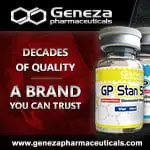b1ewsw32
New member
It's a well known fact that sam-e has many beneficial effects, ranging from liver protection,joint and connective tissue strengthening and anti depressant effects without the common adverse effects that are typically associated with the tricyclics or SSRI's.
However literature has shown that oral sam-e has a rather poor bio-avaliability and that large dosages are required to achieve a therapeutic effect. ie.400-1600mgs. This in addition to it's high cost could disuade any potential users. Although it's rapid onset of action could tilt the scales in it's favour.
I was somewhat concerned abot the discrepancy found in research demonstrating it's effect on Dopamine synthesis. Some showing increases in dopamine tone others showing reduction in nigro-striatal areas movement areas affected by Parkinson's as well as the antagonistic properties causing a typical Parkinsons depression.
It has also shown to have potential in neuro-degenerative diseases like Alzheimers.
I'd like to get some feedback from all memebers who are taking or have taken sam-e to report their positive and negative effects.
Thanks Bro's!
Neuroendocrine effects of S-adenosyl-L-methionine, a novel putative antidepressant.
Fava M, Rosenbaum JF, MacLaughlin R, Falk WE, Pollack MH, Cohen LS, Jones L, Pill L.
Clinical Psychopharmacology Unit, Massachusetts General Hospital, Harvard Medical School, Boston 02114.
S-adenosyl-L-methionine (SAMe), a putative antidepressant, is a naturally occurring substance whose mechanism of action is still a matter of speculation. It has been recently postulated that SAMe may increase the dopaminergic tone in depressed patients. Since dopamine inhibits both thyrotropin (TSH) and prolactin secretion, we investigated the effects of treatment with SAMe on the TSH and prolactin response to thyrotropin-releasing-hormone (TRH) stimulation in 7 depressed outpatient women (mean age: 46.1 +/- 7.2 years) and 10 depressed outpatient men (mean age: 38.0 +/- 10.0 years) participating in a six-week open study of oral SAMe in the treatment of major depression. At the end of the study, there was a significant reduction after treatment with SAMe in the response of both prolactin and TSH to TRH stimulation in the group of depressed men compared to pre-treatment values. On the other hand, in the group of depressed women, the posttreatment prolactin response to TRH did not appear to change when compared to pre-treatment and the TSH response to TRH challenge tended even to augment slightly after treatment with SAMe. Our results, at least in depressed men, seem to support the hypothesis of a stimulating effect of SAMe on the dopaminergic system.
Hopefully this one does not aply to humans....
Depletion of nigrostriatal and forebrain tyrosine hydroxylase by S-adenosylmethionine: a model that may explain the occurrence of depression in Parkinson's disease.
Charlton CG.
College of Pharmacy, Florida A and M University, Tallahassee 32307, USA.
The loss of nigrostriatal tyrosine hydroxylase (TH), dopamine and dopaminergic neurons are the major pathology of Parkinson's disease (PD). These catecholaminergic changes are responsible for the symptoms of tremor, hypokinesia and rigidity. Depression is also a major symptom in PD, but the cause is unknown. The impairments of catecholaminergic fibers in the frontal lobe may be involved, because the frontal lobe of the cerebrum is involved in the regulation of mood, and decreased catecholaminergic activity in the frontal lobe is related to behavioral depression. The changes that damage the nigrostriatal dopamine system and induce motor impairments may also damage the forebrain catecholamine fibers and induce depression. It means that manipulations that damage the nigrostriatum (NS) and induce parkinsonism may also deplete TH in the frontal cortex. Such an effect would suggests a basis for the depression seen in PD. The injection of S-adenosyl-L-methionine (SAM), the biological methyl donor, into the brain of rats damaged the NS, depleted TH and caused tremor and hypokinesia. SAM may interfere also with the forebrain TH, which may help to explain the occurrence of depression in PD. Experiments were designed to test such a hypothesis. The results showed that SAM caused a loss of immunoreactive nerve fibers and it decreased the intensity of TH-immunoreactivity (IR) in the frontal cortex. These changes were accompanied with the loss of cells and the depletion of TH-IR from nerve fibers in the SN and the caudate nucleus. Other studies showed that SAM depletes DA and since SAM induces PD-like changes the results may be relevant to the co-occurrence of PD symptoms and depression. A single biological manipulation may impair the nigrostriatal dopaminergic neurons as well as the frontal cortex catecholaminergic fibers.
S-adenosyl-L-methionine (SAM) in adults with ADHD, RS: preliminary results from an open trial.
Shekim WO, Antun F, Hanna GL, McCracken JT, Hess EB.
Neuropsychiatric Institute, University of California, Los Angeles 90024-6967.
The psychostimulants d-amphetamine and methylphenidate are thought to be the most effective treatment in children, adolescents, and adults with attention deficit-hyperactivity disorder (ADHD) because they potentiate both dopamine (DA) and norepinephrine (NE) at the synaptic cleft. These medications are not free from side effects and controversy. Newer effective and safe treatments are needed. S-Adenosyl-L-methionine (SAM), the active form of methionine, acts as a methyl donor and is involved in many metabolic pathways. It has beta adrenergic and DA receptor agonist activity. We have been using oral SAM in a sample of well-diagnosed adults with ADHD, residual state (RS) in a 4-week open trial to establish SAM effectiveness and safety and in a 9-week, double-blind, placebo-controlled crossover trial. Preliminary data from the open trial reveal that 75 percent (6 out of 8 male) patients improve on it. The 2 who did not improve had not improved on methylphenidate trial. Improvement ranged from moderate to marked, with minimal and transient side effects that did not interfere with functioning.
B32
However literature has shown that oral sam-e has a rather poor bio-avaliability and that large dosages are required to achieve a therapeutic effect. ie.400-1600mgs. This in addition to it's high cost could disuade any potential users. Although it's rapid onset of action could tilt the scales in it's favour.
I was somewhat concerned abot the discrepancy found in research demonstrating it's effect on Dopamine synthesis. Some showing increases in dopamine tone others showing reduction in nigro-striatal areas movement areas affected by Parkinson's as well as the antagonistic properties causing a typical Parkinsons depression.
It has also shown to have potential in neuro-degenerative diseases like Alzheimers.
I'd like to get some feedback from all memebers who are taking or have taken sam-e to report their positive and negative effects.
Thanks Bro's!
Neuroendocrine effects of S-adenosyl-L-methionine, a novel putative antidepressant.
Fava M, Rosenbaum JF, MacLaughlin R, Falk WE, Pollack MH, Cohen LS, Jones L, Pill L.
Clinical Psychopharmacology Unit, Massachusetts General Hospital, Harvard Medical School, Boston 02114.
S-adenosyl-L-methionine (SAMe), a putative antidepressant, is a naturally occurring substance whose mechanism of action is still a matter of speculation. It has been recently postulated that SAMe may increase the dopaminergic tone in depressed patients. Since dopamine inhibits both thyrotropin (TSH) and prolactin secretion, we investigated the effects of treatment with SAMe on the TSH and prolactin response to thyrotropin-releasing-hormone (TRH) stimulation in 7 depressed outpatient women (mean age: 46.1 +/- 7.2 years) and 10 depressed outpatient men (mean age: 38.0 +/- 10.0 years) participating in a six-week open study of oral SAMe in the treatment of major depression. At the end of the study, there was a significant reduction after treatment with SAMe in the response of both prolactin and TSH to TRH stimulation in the group of depressed men compared to pre-treatment values. On the other hand, in the group of depressed women, the posttreatment prolactin response to TRH did not appear to change when compared to pre-treatment and the TSH response to TRH challenge tended even to augment slightly after treatment with SAMe. Our results, at least in depressed men, seem to support the hypothesis of a stimulating effect of SAMe on the dopaminergic system.
Hopefully this one does not aply to humans....
Depletion of nigrostriatal and forebrain tyrosine hydroxylase by S-adenosylmethionine: a model that may explain the occurrence of depression in Parkinson's disease.
Charlton CG.
College of Pharmacy, Florida A and M University, Tallahassee 32307, USA.
The loss of nigrostriatal tyrosine hydroxylase (TH), dopamine and dopaminergic neurons are the major pathology of Parkinson's disease (PD). These catecholaminergic changes are responsible for the symptoms of tremor, hypokinesia and rigidity. Depression is also a major symptom in PD, but the cause is unknown. The impairments of catecholaminergic fibers in the frontal lobe may be involved, because the frontal lobe of the cerebrum is involved in the regulation of mood, and decreased catecholaminergic activity in the frontal lobe is related to behavioral depression. The changes that damage the nigrostriatal dopamine system and induce motor impairments may also damage the forebrain catecholamine fibers and induce depression. It means that manipulations that damage the nigrostriatum (NS) and induce parkinsonism may also deplete TH in the frontal cortex. Such an effect would suggests a basis for the depression seen in PD. The injection of S-adenosyl-L-methionine (SAM), the biological methyl donor, into the brain of rats damaged the NS, depleted TH and caused tremor and hypokinesia. SAM may interfere also with the forebrain TH, which may help to explain the occurrence of depression in PD. Experiments were designed to test such a hypothesis. The results showed that SAM caused a loss of immunoreactive nerve fibers and it decreased the intensity of TH-immunoreactivity (IR) in the frontal cortex. These changes were accompanied with the loss of cells and the depletion of TH-IR from nerve fibers in the SN and the caudate nucleus. Other studies showed that SAM depletes DA and since SAM induces PD-like changes the results may be relevant to the co-occurrence of PD symptoms and depression. A single biological manipulation may impair the nigrostriatal dopaminergic neurons as well as the frontal cortex catecholaminergic fibers.
S-adenosyl-L-methionine (SAM) in adults with ADHD, RS: preliminary results from an open trial.
Shekim WO, Antun F, Hanna GL, McCracken JT, Hess EB.
Neuropsychiatric Institute, University of California, Los Angeles 90024-6967.
The psychostimulants d-amphetamine and methylphenidate are thought to be the most effective treatment in children, adolescents, and adults with attention deficit-hyperactivity disorder (ADHD) because they potentiate both dopamine (DA) and norepinephrine (NE) at the synaptic cleft. These medications are not free from side effects and controversy. Newer effective and safe treatments are needed. S-Adenosyl-L-methionine (SAM), the active form of methionine, acts as a methyl donor and is involved in many metabolic pathways. It has beta adrenergic and DA receptor agonist activity. We have been using oral SAM in a sample of well-diagnosed adults with ADHD, residual state (RS) in a 4-week open trial to establish SAM effectiveness and safety and in a 9-week, double-blind, placebo-controlled crossover trial. Preliminary data from the open trial reveal that 75 percent (6 out of 8 male) patients improve on it. The 2 who did not improve had not improved on methylphenidate trial. Improvement ranged from moderate to marked, with minimal and transient side effects that did not interfere with functioning.
B32
Last edited:


 Please Scroll Down to See Forums Below
Please Scroll Down to See Forums Below 











